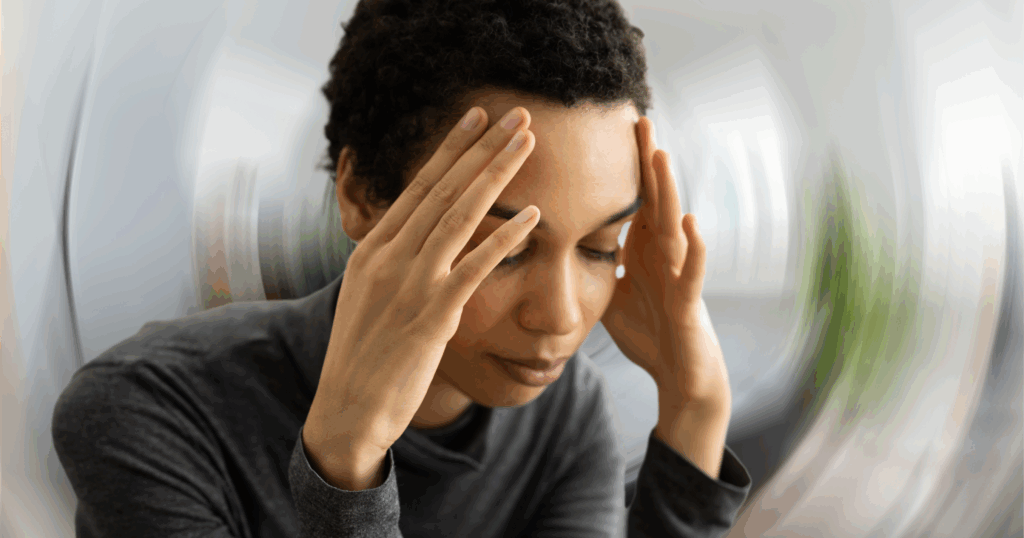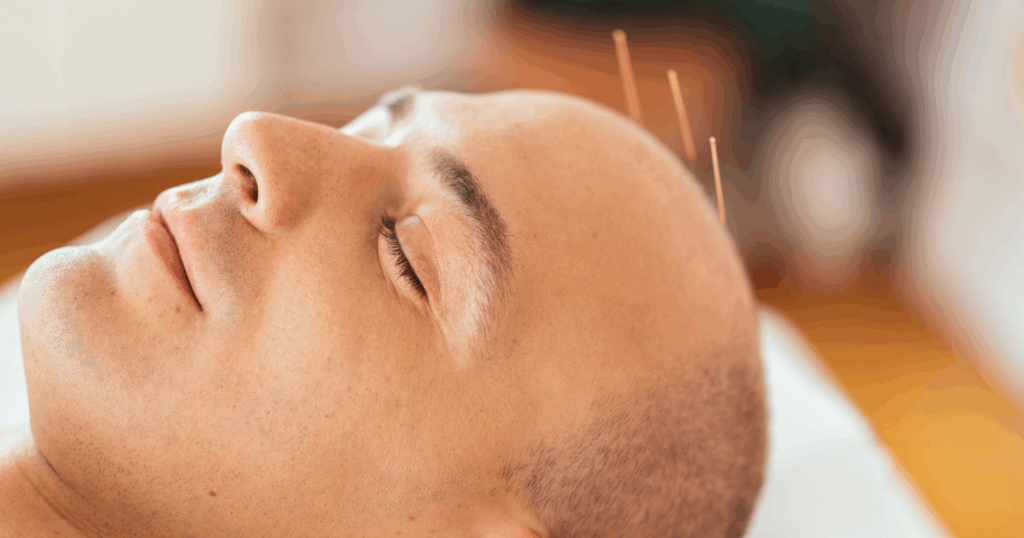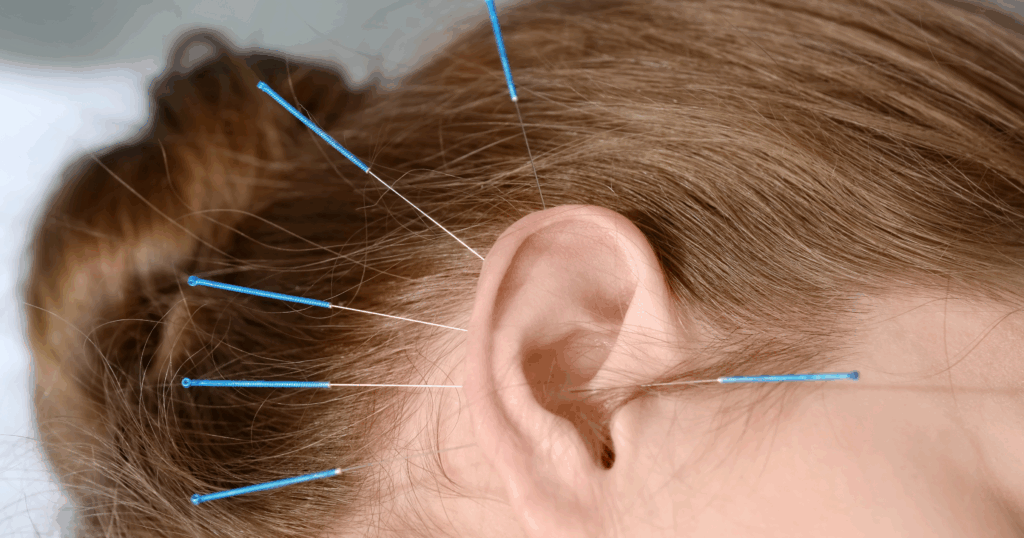Acupuncture for Vertigo: A Comprehensive Guide to Natural Relief
Vertigo is more than just feeling dizzy—it’s a disorienting, sometimes terrifying sensation that can disrupt every aspect of daily life. Imagine the room spinning uncontrollably, your balance faltering, nausea rising, and the anxiety that comes with not knowing when the next episode will strike. For many, vertigo is a chronic condition that affects their ability to work, drive, or even stand safely. It’s a challenge that demands compassionate care and effective treatment options.
Acupuncture, a cornerstone of Traditional Chinese Medicine (TCM), offers a natural, holistic approach to managing vertigo. By stimulating specific points on the body, acupuncture helps regulate the flow of energy, or Qi, and restores harmony among the body’s systems. This process supports the nervous system, improves circulation to the inner ear and brain, and alleviates the underlying imbalances that contribute to vertigo symptoms. Unlike treatments that only address the symptoms temporarily, acupuncture aims to promote long-term healing and balance, improving not only vertigo but also overall well-being.
Acupuncture for Vertigo: A Comprehensive Guide to Natural Relief
Vertigo is more than just feeling dizzy—it’s a disorienting, sometimes terrifying sensation that can disrupt every aspect of daily life. Imagine the room spinning uncontrollably, your balance faltering, nausea rising, and the anxiety that comes with not knowing when the next episode will strike. For many, vertigo is a chronic condition that affects their ability to work, drive, or even stand safely. It’s a challenge that demands compassionate care and effective treatment options.
Acupuncture, a cornerstone of Traditional Chinese Medicine (TCM), offers a natural, holistic approach to managing vertigo. By stimulating specific points on the body, acupuncture helps regulate the flow of energy, or Qi, and restores harmony among the body’s systems. This process supports the nervous system, improves circulation to the inner ear and brain, and alleviates the underlying imbalances that contribute to vertigo symptoms. Unlike treatments that only address the symptoms temporarily, acupuncture aims to promote long-term healing and balance, improving not only vertigo but also overall well-being.
Key Takeaways
-
Acupuncture treats vertigo holistically by restoring balance in the nervous system, improving circulation to the inner ear, and addressing root energetic imbalances.
-
Vertigo relief through acupuncture often comes without the side effects associated with medications, making it a safer option for long-term symptom management.
-
Advanced techniques like scalp and auricular acupuncture can enhance results by directly targeting balance-related neurological pathways and inner ear function.
-
Stress-related vertigo responds well to acupuncture, as treatments regulate the autonomic nervous system and reduce anxiety that can trigger or worsen episodes.
-
Acupuncture supports recovery from multiple types of vertigo, including BPPV, Ménière’s disease, migraine-associated vertigo, and seasonal or stress-induced flare-ups.
Understanding Vertigo
What is Vertigo?
Vertigo is a unique form of dizziness characterized by a false sensation that you or your surroundings are spinning or moving. Unlike general dizziness, which might feel like lightheadedness or faintness, vertigo creates a vivid, unsettling illusion of motion. This sensation often comes with nausea, vomiting, sweating, and difficulty maintaining balance. Many people describe it as feeling like they are on a boat in rough seas or trapped in a spinning carousel. Vertigo episodes can last seconds, minutes, or even days, profoundly impacting daily activities and emotional health.
Types of Vertigo
Vertigo can be broadly categorized into two types based on its origin:
- Peripheral Vertigo: The most common type, caused by issues in the inner ear or vestibular nerve. Conditions like Benign Paroxysmal Positional Vertigo (BPPV), Ménière’s disease, and vestibular neuritis are typical examples. Peripheral vertigo often triggers intense spinning sensations, especially with head movements.
- Central Vertigo: Less common but more serious, central vertigo originates from problems in the brainstem or cerebellum. Causes include stroke, multiple sclerosis, or tumors. It may come with neurological symptoms such as double vision, weakness, or speech difficulties.
Common Symptoms
Vertigo manifests through a constellation of symptoms that vary in intensity and duration:
- A spinning or whirling sensation, either of the self or the environment
- Loss of balance or unsteadiness, increasing fall risk
- Nausea and vomiting, sometimes severe enough to require medical attention
- Headaches and heightened sensitivity to light or sound, especially in migraine-associated vertigo
- Hearing changes, tinnitus (ringing in the ears), or a feeling of fullness in the ear
Causes of Vertigo
Understanding the root cause of vertigo is essential for effective treatment. Here are some of the most common causes:
- Benign Paroxysmal Positional Vertigo (BPPV): The leading cause, where tiny calcium crystals dislodge and disrupt inner ear balance signals. Movements like turning over in bed can trigger episodes.
- Ménière’s Disease: Fluid buildup in the inner ear causes recurrent vertigo, hearing loss, tinnitus, and ear fullness.
- Vestibular Neuritis and Labyrinthitis: Viral inflammation of the vestibular nerve or inner ear, causing sudden, severe vertigo, often with nausea and sometimes hearing loss.
- Migraines: Vestibular migraines cause vertigo lasting minutes to hours, often with headaches and light sensitivity.
- Other Causes: Head or neck injuries, brain tumors, strokes, ototoxic medications, dehydration, low blood pressure, multiple sclerosis, and psychological factors like anxiety and stress.
- Stress and Anxiety: While not direct causes, they can worsen vertigo symptoms and delay recovery by affecting the nervous system.
Conventional Treatments for Vertigo
Standard Medical Approaches
Modern medicine offers several treatments aimed at reducing vertigo symptoms and addressing underlying causes:
- Medications: Vestibular suppressants like meclizine, anti-nausea drugs, and corticosteroids are commonly prescribed. These can provide short-term relief but often come with side effects such as drowsiness or dependency risks.
- Physical Therapy: Vestibular rehabilitation exercises help retrain the brain to compensate for inner ear dysfunction. The Epley maneuver, a series of guided head movements, is particularly effective for repositioning dislodged crystals in BPPV.
- Limitations: Despite their usefulness, these treatments don’t work for everyone. Some patients experience incomplete symptom relief, medication side effects, or intolerance to maneuvers. Chronic vertigo often requires ongoing management beyond conventional methods.
Why Consider Acupuncture?
Acupuncture stands out as a natural, drug-free alternative or complementary therapy. It addresses not only the physical symptoms but also the emotional and energetic imbalances that contribute to vertigo. Many patients seek acupuncture because it offers relief without the side effects of medications and supports long-term health by promoting overall balance and resilience.
How Acupuncture Works for Vertigo
Restoring Inner Ear Balance
Acupuncture targets specific points that influence blood flow and nerve function in the head, neck, and ear regions. Points like GB20 (Fengchi), TW17 (Yifeng), and P6 (Neiguan) are traditionally used to alleviate vertigo by enhancing circulation, reducing inflammation, and calming the vestibular system. By improving oxygenation and lymphatic drainage, acupuncture helps restore the delicate equilibrium necessary for stable balance.
Reducing Stress and Anxiety
Vertigo and anxiety often form a vicious cycle: vertigo triggers panic, and anxiety worsens vertigo symptoms. Acupuncture modulates the autonomic nervous system, lowering stress hormones like cortisol and promoting relaxation. This calming effect not only reduces the frequency and severity of vertigo attacks but also improves emotional well-being and sleep quality.
Supporting Neurological Health
For vertigo linked to neurological conditions or migraines, acupuncture may facilitate neural repair and regulation. It stimulates the release of neuropeptides and endorphins, which help modulate pain, reduce inflammation, and enhance nerve function. This neuroprotective effect can be crucial for patients with central vertigo or migraine-associated vertigo.
Addressing Root Causes in Traditional Chinese Medicine (TCM)
In TCM, vertigo is often related to imbalances in the liver, spleen, and kidney systems—organs responsible for fluid metabolism, blood flow, and energy regulation. Acupuncture works to harmonize these systems, correcting underlying disharmonies such as liver wind, spleen deficiency, or kidney yin deficiency. By treating the root cause, acupuncture offers sustainable relief rather than temporary symptom suppression.
Scientific Evidence Supporting Acupuncture for Vertigo
A growing body of research supports acupuncture’s potential effectiveness in managing vertigo symptoms. Clinical studies have reported reductions in vertigo frequency, intensity, and associated nausea following acupuncture treatment. For instance, a study published in Medicine (2023) found that acupuncture combined with moxibustion significantly improved symptoms in patients with Horizontal Semicircular Canal Benign Paroxysmal Positional Vertigo (BPPV), including better balance and reduced autonomic symptoms such as nausea and cold sweats.
Additional research indicates that acupuncture may offer comparable benefits to conventional therapies for vestibular neuritis and Ménière’s disease. Patients in these studies experienced improvements in quality of life and fewer vertigo episodes. These findings suggest that acupuncture not only helps relieve symptoms but may also enhance vestibular compensation and cerebral blood flow, although more high-quality, large-scale clinical trials are needed to confirm these effects.
Advanced Acupuncture Techniques for Vertigo Relief
While traditional acupuncture involves inserting fine needles at specific points, several advanced techniques have shown promising results in vertigo treatment:
Scalp Acupuncture
This method targets precise areas on the scalp that correspond to neurological functions related to balance and vestibular control. Scalp acupuncture has been reported to rapidly improve vertigo symptoms, especially in cases related to cervical spondylosis and posterior circulation insufficiency. It works by regulating qi and blood flow in the brain and improving cerebral blood supply, which can be crucial for central vertigo cases.
Auricular (Ear) Acupuncture
The ear is a microsystem reflecting the entire body. Stimulating auricular points can influence multiple organ systems and nervous pathways. Auricular acupuncture and acupressure have been effective in reducing vertigo symptoms, improving hearing issues, and promoting emotional balance. Techniques include ear seed embedding, ear acupoint pressing, and auricular moxibustion.
Electroacupuncture
This involves applying a mild electrical current to acupuncture needles to enhance stimulation. Electroacupuncture can amplify the effects on neurotransmitter release, blood flow, and nerve modulation, potentially offering faster and more sustained vertigo relief.
These advanced methods are often combined with traditional acupuncture to tailor treatment to the patient’s specific condition and constitution, maximizing therapeutic outcomes.
Types of Vertigo Acupuncture Can Help With
- Seasonal Vertigo: Allergies and weather changes can affect inner ear function, leading to vertigo. Acupuncture helps regulate immune response and reduce inflammation, offering relief during seasonal flare-ups.
- BPPV and Vestibular Disorders: Acupuncture supports the repositioning of dislodged crystals and calms vestibular disturbances, often complementing physical maneuvers like the Epley.
- Ménière’s Disease: By improving fluid metabolism and reducing inner ear pressure, acupuncture may decrease the frequency and severity of vertigo attacks.
- Migraine-Associated Vertigo: Acupuncture modulates neurological triggers and reduces migraine-related vertigo symptoms.
- Stress-Induced Vertigo: Through its calming effect on the nervous system, acupuncture reduces anxiety and nervous system hyperactivity that can provoke vertigo.
Self-Care Tips and Home Remedies for Vertigo
Acupressure Techniques
You can apply gentle pressure to specific points to alleviate vertigo symptoms between treatments:
- TW17 (Yifeng): Located behind the earlobe, in the depression between the mastoid process and the mandible. Apply gentle circular pressure for 1-2 minutes.
- GB20 (Fengchi): Found at the base of the skull, in the hollows on either side of the spine. Press firmly but comfortably to relieve dizziness and improve circulation.
- P6 (Neiguan): On the inner forearm, about three finger-widths below the wrist crease, between the two tendons. This point helps reduce nausea and calm the nervous system.
Lifestyle Modifications
- Avoid sudden head movements and get up slowly from lying or sitting positions to prevent triggering vertigo.
- Stay well-hydrated and maintain balanced blood sugar levels.
- Practice stress management techniques such as meditation, yoga, or deep breathing exercises to reduce anxiety-related vertigo.
Dietary Recommendations
- Incorporate anti-inflammatory foods like leafy greens, turmeric, and omega-3 rich fish.
- Stay hydrated with water and herbal teas such as ginger, which also helps with nausea.
- Consider supplements like Ginkgo biloba, known to improve blood circulation and reduce vertigo symptoms (consult your healthcare provider before starting any supplements).
Why Acupuncture is an Effective Natural Treatment for Vertigo Relief
Vertigo can be a debilitating condition, but it doesn’t have to control your life. Acupuncture offers a safe, effective, and holistic approach to managing vertigo symptoms by addressing both physical and emotional factors. It complements conventional treatments and supports long-term balance and well-being. At ACA Acupuncture & Wellness, we are dedicated to helping you find relief and regain your quality of life through personalized care rooted in the wisdom of Traditional Chinese Medicine combined with modern understanding.
If you or a loved one struggles with vertigo, we encourage you to explore acupuncture as part of your treatment journey. Together, we can work toward restoring your balance—physically, mentally, and energetically.
Sources:
Xia, Y., Sun, J., Dai, K., Sun, F., Ren, Z., & Cheng, B. (2024). Acupuncture for Residual Dizziness After Successful Repositioning Maneuvers in Patients with Benign Paroxysmal Positional Vertigo: Study Protocol for a Randomized Noninferiority Trial. Medical Acupuncture, 36(4), 227–234. https://doi.org/10.1089/acu.2023.0135
Yi, A., Yang, G., Wang, J., Zhang, L., Yuan, P., Hong, J., & Zhou, L. (2024). Clinical research progress on acupuncture for the treatment of otogenic vertigo. World Journal of Clinical Cases, 12(19), 3676–3683. https://doi.org/10.12998/wjcc.v12.i19.3676
Frequently Asked Questions
Does acupuncture for vertigo work?
Yes, many patients report significant relief from vertigo symptoms after acupuncture treatments. Acupuncture works by improving inner ear function, reducing inflammation, and calming the nervous system. It helps restore balance and reduces the frequency and intensity of vertigo episodes. However, results can vary depending on the underlying cause and individual response to treatment.
Where is the pressure point for vertigo?
Common acupressure points for vertigo include TW17, located behind the ear, GB20 at the base of the skull, and P6 on the inner forearm. Applying gentle pressure to these points can improve circulation and reduce dizziness and nausea. These points are easily accessible for self-care between acupuncture sessions. Proper technique and consistency enhance their effectiveness.
How many acupuncture sessions are needed for vertigo?
The number of acupuncture sessions needed varies based on the severity and cause of vertigo. Many patients begin to notice improvement within 3 to 6 sessions. Chronic or more complex cases may require ongoing maintenance treatments to sustain relief. A personalized treatment plan is essential for optimal results.
What is the Chinese medicine for vertigo?
In Traditional Chinese Medicine, vertigo is often linked to imbalances in the liver, spleen, and kidney organ systems. Treatment involves acupuncture and herbal formulas tailored to the individual’s specific pattern diagnosis. The goal is to restore harmony and proper energy flow within the body. This holistic approach addresses both symptoms and root causes.
How to cure your vertigo naturally?
Many patients achieve relief from vertigo through a combination of acupuncture, lifestyle modifications, dietary changes, and stress management techniques. Consistency in following a comprehensive treatment plan is crucial. Professional guidance ensures that therapies are safe and effective. Natural healing often involves addressing both physical and emotional factors.
What is the best therapy for vertigo?
The best therapy depends largely on the underlying cause of vertigo. For BPPV, physical maneuvers like the Epley maneuver are highly effective. In chronic or complex cases, combining acupuncture with conventional treatments offers a more holistic approach. Tailored care plans provide the greatest chance of lasting relief.
Contact ACA Acupuncture & Wellness
Get in Touch
Newsletter Sign Up
LOCATIONS
MANHATTAN
QUEENS
NEW JERSEY
CALIFORNIA

ACA Franchise Opportunities
The over $4 billion US acupuncture market offers a great opportunity with over 10% annual growth rates and a continuing flow of new patients interested in the benefits of acupuncture.







